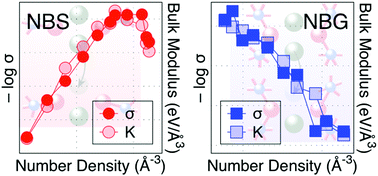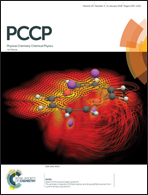A new model linking elastic properties and ionic conductivity of mixed network former glasses†
Abstract
Glasses are promising candidate materials for all-solid-state electrolytes for rechargeable batteries due to their outstanding mechanical stability, wide electrochemical stability range, and open structure for potentially high conductivity. Mechanical stiffness and ionic conductivity are two key parameters for solid-state electrolytes. In this study, we investigate two mixed-network former glass systems, sodium borosilicate 0.2Na2O + 0.8[xBO1.5 + (1 − x)SiO2] and sodium borogermanate 0.2Na2O + 0.8[xBO1.5 + (1 − x)GeO2] glasses. With mixed-network formers, the structure of the network changes while the network modifier mole fraction is kept constant, i.e., x = 0.2, which allows us to analyze the effect of the network structure on various properties, including ionic conductivity and elastic properties. Besides the non-linear, non-additive mixed glass former effect, we find that the longitudinal, shear and Young's moduli depend on the combined number density of tetrahedrally and octahedrally coordinated network former elements. These units provide connectivity in three dimensions, which is required for the networks to exhibit restoring forces in response to isotropic and shear deformations. Moreover, the activation energy for modifier cation, Na+, migration is strongly correlated with the bulk modulus, suggesting that the elastic strain energy associated with the passageway dilation for the sodium ions is governed by the bulk modulus of the glass. The detailed analysis provided here gives an estimate for the number of atoms in the vicinity of the migrating cation that are affected by elastic deformation during the activated process. The larger this number and the more compliant the glass network, the lower is the activation energy for the cation jump.



 Please wait while we load your content...
Please wait while we load your content...